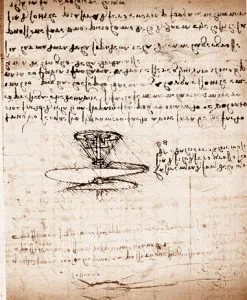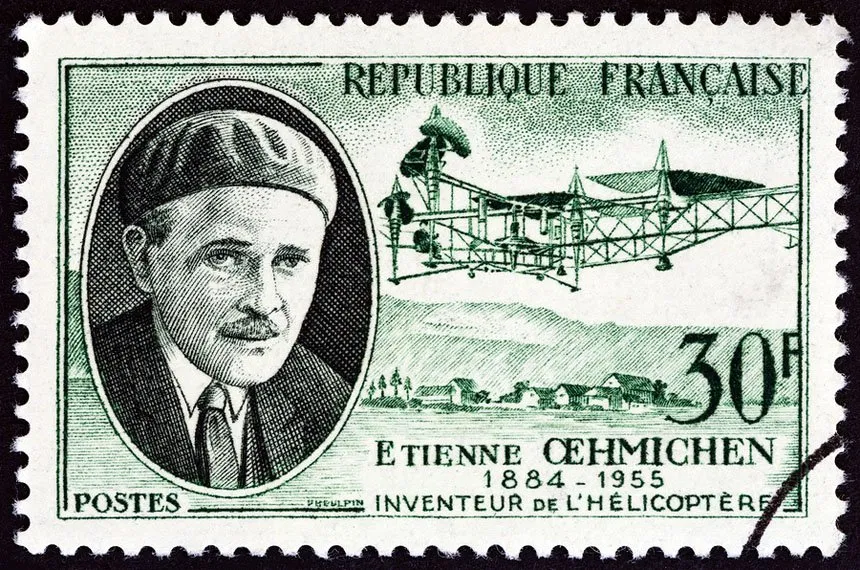The history of manufacturing helicopter begins in the 15th century with a Leonardo da Vinci drawing. The drawing, named ornithopter flying machine, was done in 1488 but would never be built until it inspired modern helicopter designer, Igor Sikorsky, a Russian. Igor is undoubtedly the recognized father of modern helicopters.
Leonardo da Vinci was fascinated by the idea of Daedalus and Icarus flying and so designed a helical screw machine. It did not have rotor blades, but it followed the ancient Chinese concept of a bamboo copter that was lifted by a spin of the rotors.
 After Da Vinci, other inventors created helicopter-like toys with the most notable being the 1870 Alphonse Penaud’s coaxial rotor helicopter whose lift was created by rubber bands. It is said that the wright brothers were inspired by the one of these toys to invent the very first airplane that was heavier than air. Wright brothers would go on and make history at the beginning of the 20th century by creating an aircraft that lifted off the ground despite being heavier than the air.
After Da Vinci, other inventors created helicopter-like toys with the most notable being the 1870 Alphonse Penaud’s coaxial rotor helicopter whose lift was created by rubber bands. It is said that the wright brothers were inspired by the one of these toys to invent the very first airplane that was heavier than air. Wright brothers would go on and make history at the beginning of the 20th century by creating an aircraft that lifted off the ground despite being heavier than the air.
The name “helicopter” comes from Greek words “helix” which means spiral or spiraling and “pteron” which means wing. The name came as a result of the idea that the first helicopter would get its lift from spiraling aero foils. Unfortunately, this was not to be because the rotors proved a better lift.
The Helicopters That Preceded Sikorsky’s Invention
Paul Cornu Invention
Paul Cornu was a French engineer who is credited with flying the first piloted helicopter. In 1907, he would manage to build a helicopter and make it lift off-the-ground. The helicopter had 2 rotor blades which rotated in opposite directions. This ensured that the torque was canceled. It had an engine with 24 horsepower.
Unfortunately, the helicopter was not flexible. It had to be held in position by men and due to its inflexibility, it did not turn out to be a huge success.
Etienne Oehmichen Invention

Another of famous but unsuccessful helicopter engineers is the Frenchman, Etienne Oehmichen who designed a helicopter which had its rotors vertically mounted and rotating in different directions. It also had a large lifting rotor and a tail rotor that was developed much later.
The Oehmichen No.2 was launched in 1922 and made history by becoming the first helicopter to transport a man. The following year, Oehmichen would fly the helicopter for between 360 and 525 meters and in the May of 1924 made history again by flying his helicopter for 1 kilometer in 7 minutes forty seconds. It is also in the same period that he transported 2 passengers in the helicopter.
Henrich Focke and Gerd Achgelis Invention
Although the Oehmichen helicopter was reasonably successful, the Focke-Wolfe FW 61 is really the first functional helicopter of the world. It was an invention of Henrich Focke, who was an aeronautic engineer and Gerd Achgelis who was pilot. Both of them were Germans.
The helicopter’s design copied a prior invention, the Focke-Wulf FW 44. The FW 44 used rotor technology that utilized radial engine to rotate the twin rotors. A major breakthrough would come when the two inventors designed a counter rotor that rotated in the opposite direction, thereby resolving the torque reaction.
The FW 61 copied all that and then added the horizontal axis propeller which was driven using an engine. To cool the engine, they flew the helicopter at low speed or let it hover. In 1937, they built another prototype which successfully did the autorotation landing. They did this without necessitating an engine switch on.
Igor Sikorsky, the Father of Modern Helicopters.
From the history above, it is clear that the Russian Sikorsky was not the first man to invent a helicopter. What he did is invent a helicopter that was so successful that its design is still in use to date. He is therefore credited to have heralded the quick succession of inventions that followed his initial design.
Sikorsky was not only into helicopters. He was an aviation pioneer in the fixed wing aircraft. Sikorsky was one of the very first Russians to immigrate to the United States after the First World War in 1919. He founded the Sikorsky Aircraft Corporation towards the end of 1923. He invented the rotor design that is still being used presently in helicopters. He also designed the Sikorsky R-4 whose design was so safe that it got to be mass produced.
Sikorsky was homeschooled by his mother who would introduce him to Leonardo da Vinci. His father on the other hand encouraged him to pursue his interest in natural sciences. By the time he was 12, he had already started modelling flying machines such as a helicopter which got its lift using rubber bands.
At 17, Sikorsky decided to study engineering. After three years in the Imperial Russian Naval Academy, Sikorsky would graduate with an engineering degree. Two years later, he would learn of the Wright Brothers, the pioneering aeronautical pioneers. He asked his sister to finance his aviation education in Paris. This is how he came in touch with his first serious aviation experts.
In 1909, Sikorsky designed his first helicopter in Russia. He quickly realized that there were so many factors that hindered his progress. First of all, he lacked the experience and money to continue with his design. He nevertheless continued his design work, even creating the first ever 4-engine bomber, that went on to be used by Russia in the WW1.
It was not until much later in 1939 that he developed his most renowned helicopter prototype. On September of that year, he made his maiden flight. It took an additional 8 months to get a free flight. Unfortunately, the helicopter would fly in all directions other than forward. It would take Sikorsky a few more years to successfully design a helicopter that would fly. In 1942, his first helicopter went into mass production.
Sikorsky may not be the first inventor of helicopters, but he is definitely the man who made flying with helicopters a truly commercially viable endeavor.
